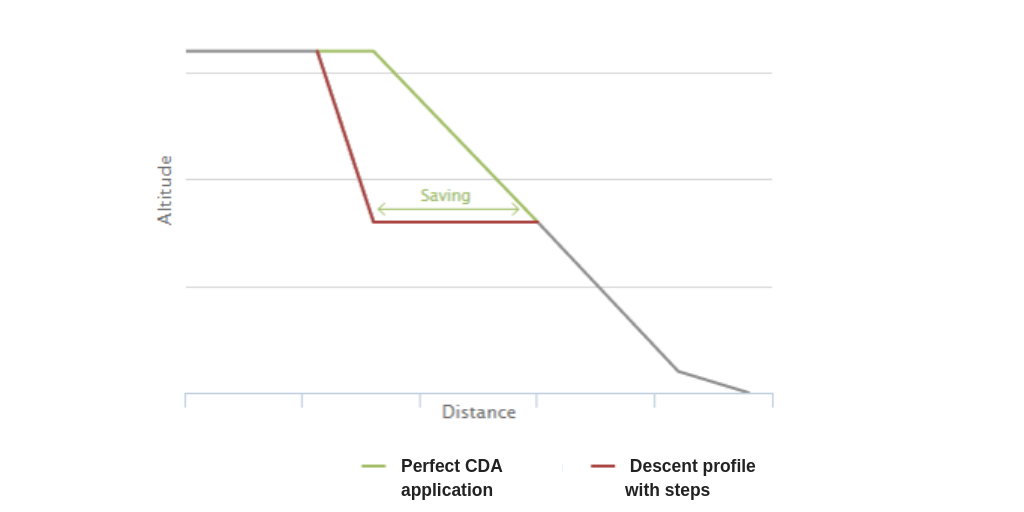How AI is revolutionizing Fuel Efficiency in aviation
Artificial Intelligence (AI) is reshaping numerous industries and aviation is no exception. In the last ten to twenty years, we have seen a lot of data being gathered by airlines and the aeronautical industry. Behind all that data, there is a whole new realm of possibilities to get more relevant insights for airline operations, but analyzing all that information can be challenging. That's where AI comes in handy.
As the industry grapples with economic pressures and stringent environmental regulations, AI is emerging as a pivotal technology, offering innovative solutions that enhance operational efficiency and sustainability.
|
Summary |
How is AI used in aviation?
With its profound capacity for analyzing and synthesizing data, AI is uniquely positioned to help tackle some of the most critical challenges in aviation, notably optimizing airlines' entire operational process. Additionally, AI's predictive capabilities allow airlines to foresee potential issues and inefficiencies before they occur, enabling preemptive actions that enhance safety and efficiency.
Let's take a look at how this technology works.
How does AI work?
AI analyzes historical data and real-time inputs to learn and predict outcomes. Most AI techniques are based on learning from data sets to reproduce patterns, so AI needs a lot of data to work.
These technologies use advanced algorithms (including machine learning and deep learning) to process data at an unprecedented scale, offering insights crucial for decision-making processes.
💡 Good to know
For any data-driven analysis, the quality of the data collected will have a notable impact on the results given. If you train an AI model with bad-quality data, you will certainly have poor results. Thus, it is important to be sure the data quality you are training the AI model with is good to have pertinent results.
When can airlines use AI?
AI is used across several domains in aviation, from enhancing passenger experiences to optimizing flight operations for better fuel efficiency. This involves a spectrum of technologies designed to optimize various operational facets. Here are some examples:
- AI can help airlines, ATCs, and other operators by providing real-time recommendations on how to optimize their activity.
- This technology plays a crucial role in predictive maintenance, which ensures aircraft safety and reduces unnecessary maintenance costs.
- New AI technologies, such as voice recognition, can enhance communication between pilots and control operators by quickly analyzing and providing valuable insights. These advancements improve efficiency and facilitate smoother interactions and decision-making processes.
|
How can AI help make aviation more sustainable?
As mentioned, AI contributes to sustainable aviation by enabling airlines to operate more efficiently. Because airlines now have significant amounts of data, they can know things they couldn't before. Nowadays, we can leverage more precise and accurate AI fuel models to spot inefficiencies and rapidly address those issues, thus finding new ways to save fuel.
The core of AI in fuel efficiency lies in its ability to break down vast datasets into manageable insights that can drive fuel efficiency improvements. This involves identifying less apparent patterns that can lead to significant fuel savings.
Related content >>> Harnessing Artificial Intelligence to go deeper with fuel efficiency
With these AI models, it is now possible to provide pilots and other stakeholders with more meaningful recommendations regarding fuel-efficient procedures or eco-flying practices they can apply during their operations. This includes optimizing flight schedules and routes to minimize fuel consumption and carbon emissions.
💡 Did you know AI can allow real-time operational adjustments?
These adjustments are based on predictive models that assess weather, traffic, and other environmental factors, ensuring optimal fuel efficiency and reduced emissions.
For example, during onboard operations, AI can help pilots through EFB apps, giving them personalized recommendations based on real-time and historical data on how to operate.
AI-powered Fuel Efficiency
Improving operational processes is an important part of Fuel efficiency. An airline's available data can be a game changer, revealing more accurately where to improve.
Nevertheless, analyzing considerable amounts of data can be time-consuming and burdensome, especially given the airlines' teams' workload. Moreover, lacking dedicated skills to work on such topics can hinder effective data analysis and utilization.
In this case, AI is a tool that helps and collaborates with humans to improve operations more efficiently. AI applications extend to analyzing operational data and identifying trends and inefficiencies. The system pinpoints areas where improvements can be made and suggests actionable measures to achieve specific goals.
5 AI application cases for Fuel Efficiency
1. Optimizing flight routes with AI
Flight operators can optimize their routes in two dimensions:
- Vertical Profile Optimization
- Lateral Profile Optimization
Lateral Profile Optimization aims to minimize fuel burn and flight time by focusing on an aircraft's lateral flight path. Commonly, pilots are supposed to follow the flight plan created beforehand. However, within this flight plan, there can be shortcuts (also called Directs) that the pilot can request from ATC to avoid adverse weather conditions or save time and fuel.
Sometimes, pilots can be unaware of the possibility of requesting a Direct during a flight. Still, this issue can be tackled thanks to AI's capability to dynamically optimize flight routes and profiles based on historical and real-time data.
For example, AI-based lateral profile optimization solutions like SkyBreathe® On Board Direct Assistant can provide shortcut recommendations to pilots at the right time without troubling the flight operator with tons of data to analyze alone.

Airlines have achieved up to 30% additional fuel savings through shortcuts compared to the airline's usual operations with SkyBreathe® On Board Direct Assistant.
Related content >>> Fly shorter with directs
2. AI and approach optimization
AI can also be used to refine the approach process, ensuring that aircraft can minimize extended flight times and unnecessary fuel burns during this critical phase of flight.
Pilots must deploy their landing configuration at this stage, considering safety and fuel efficiency. Sometimes, the pilot can choose different approaches with different fuel efficiency levels. AI can help the flight operator make the most optimized choice by providing the best recommendations resulting from its data analysis in real-time.
To illustrate how artificial intelligence can improve approach optimization, let's examine the Continuous Decent Approach eco-flying practice. This approach involves adopting a smooth constant-angle descent at idle thrust for landing instead of a step-by-step descent.
Depending on the aircraft, the landing airport, and the procedures, there are many ways to apply a continuous descent approach. Therefore, AI models must reflect all approach trajectories within this practice as closely as possible to provide the most beneficial approach for the occasion.
CDA approach VS step-by-step descent.
3. Predictive maintenance with AI
Predictive maintenance aims to avoid any aircraft component failure by changing it before it might cause problems. In the beginning, it wasn't thought for fuel efficiency reasons. But thanks to the machine learning models used to predict component failure, analysts gained access to the entire performance data and insights into the components that allowed them to evaluate fuel efficiency.
By monitoring aircraft systems and predicting potential failures, AI enables timely maintenance and adjustments that keep aircraft performing at optimal efficiency.
Airlines can, for example, use performance analysis made by AI models to assess when to change aircraft pieces or even optimize their aircraft engine wash schedule to boost fuel efficiency.

Related content >>> How to optimize engine wash schedule using data
4. Helping ATM design next-gen procedures
AI's role extends to air traffic management, where it can assist in designing procedures that optimize air traffic flows and reduce overall environmental impact. AI can provide insights based on historical data that will allow ATC to know much more about control operations inefficiencies and help them optimize them for future processes.
5. AI-based contrails' understanding and avoidance strategies
One of the newest areas where AI's impact on aviation sustainability is profoundly felt is the understanding and avoidance of contrails. These condensation trails, formed by aircraft exhaust in cold and humid atmospheres, notably affect climate change. By integrating AI into this research topic, the industry can take proactive steps to understand and avoid the issue.
Artificial Intelligence models used in this project can help understand and strategize against contrail formation by predicting and providing recommendations to alter flight paths, minimizing the environmental impact of flights' non-CO2 emissions.
Related content >>> Understanding Contrails: Formation, impact and prevention
What are the biggest challenges in integrating AI into aviation?
Adopting AI within aviation is challenged by implementation costs, AI explainability topics, and safety precautions, among other reasons.
Safety is one of the industry's most critical factors. Therefore, AI models must consider the strict requirements of any other system used in aviation.
The key to tackling this challenge is to ensure the accuracy and predictability of AI model behavior and its predictions. This was more straightforward for older-generation algorithms because every step of the algorithm process was known. However, for newer models, it is essential to understand and explain what the AI will produce as an output for its processes. AI explainability is crucial for certification and safety compliance and building trust and adoption among operators.
To sum up
Integrating AI into aviation promises transformative changes, particularly in how airlines address efficiency and sustainability. This technology represents a set of tools that will allow the aviation industry to perform actions in seconds instead of weeks.
Save fuel, save money, save the planet!
WANT TO LEARN MORE?
Discover more fuel-saving practices to apply during each phase of a flight >> Download the infographic




